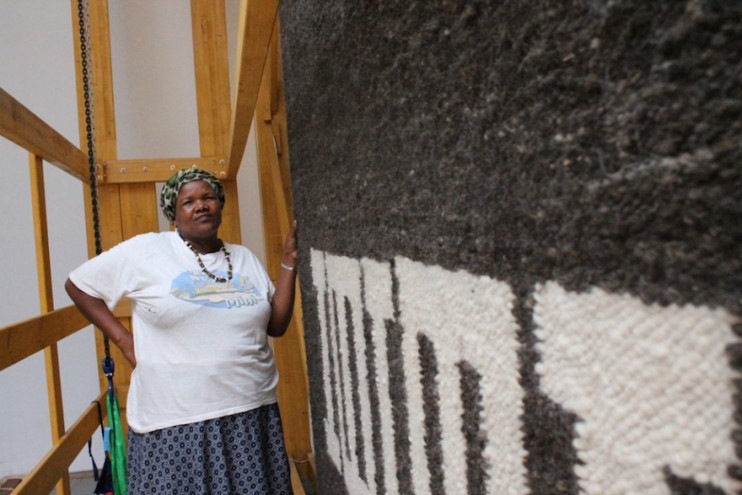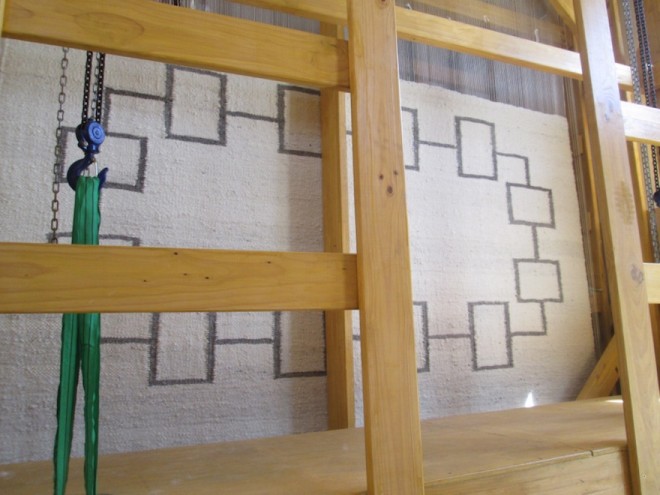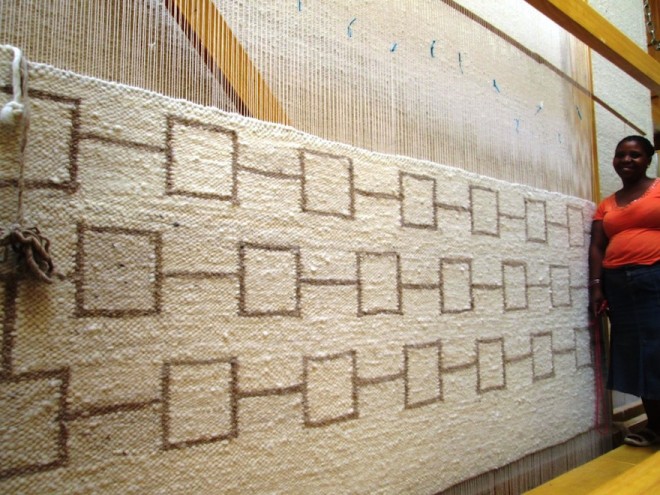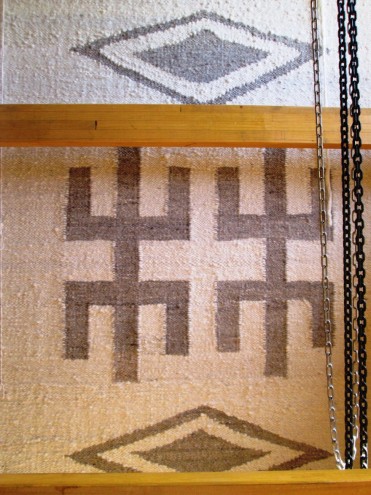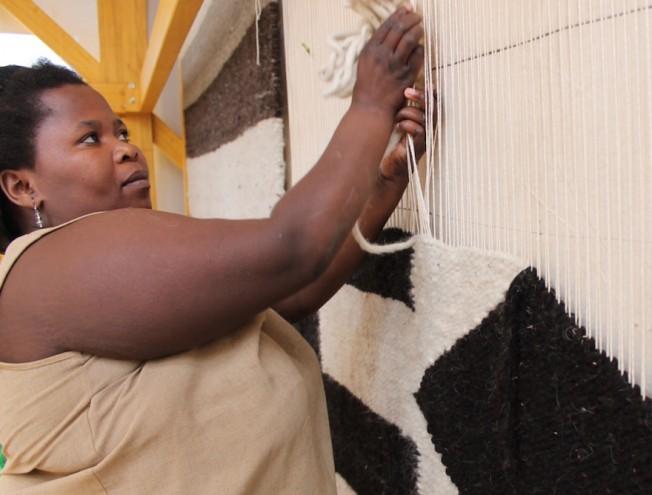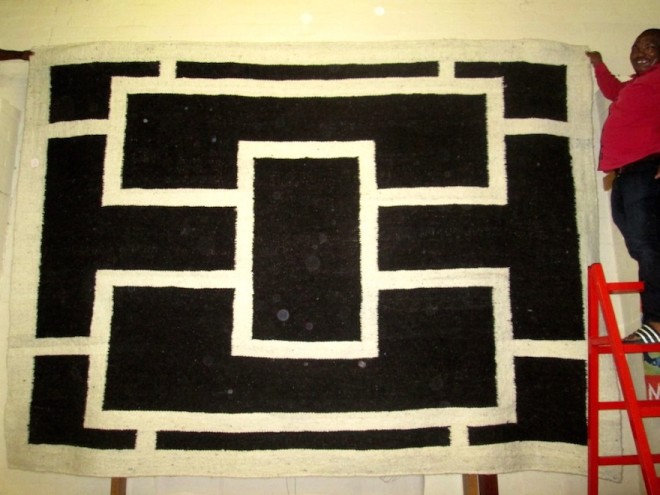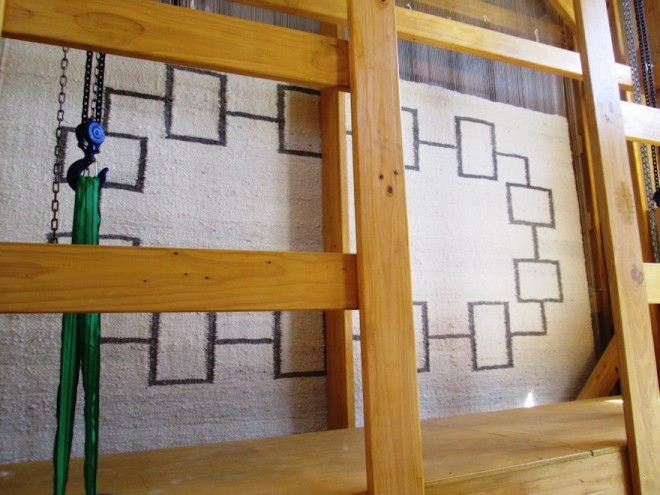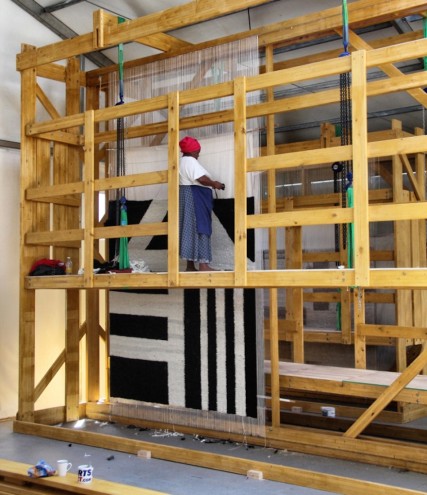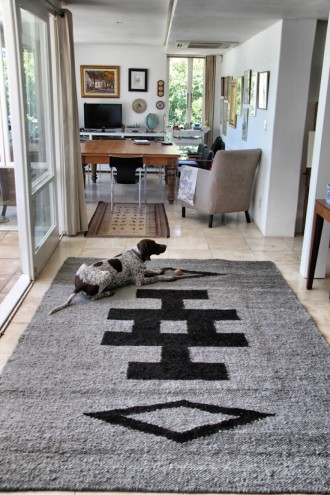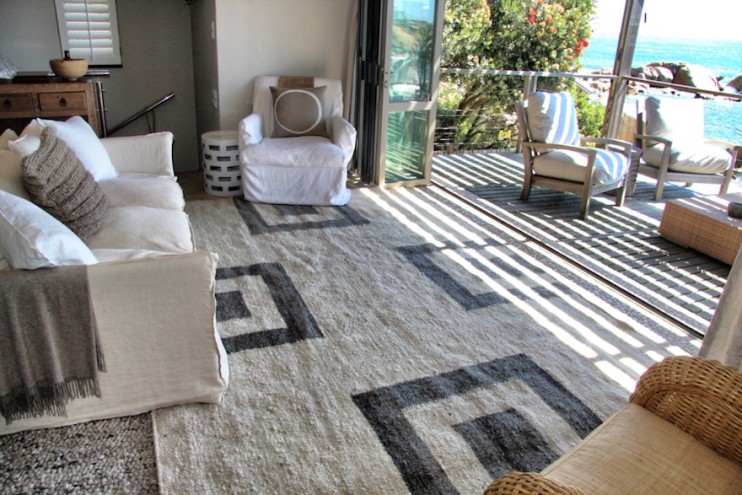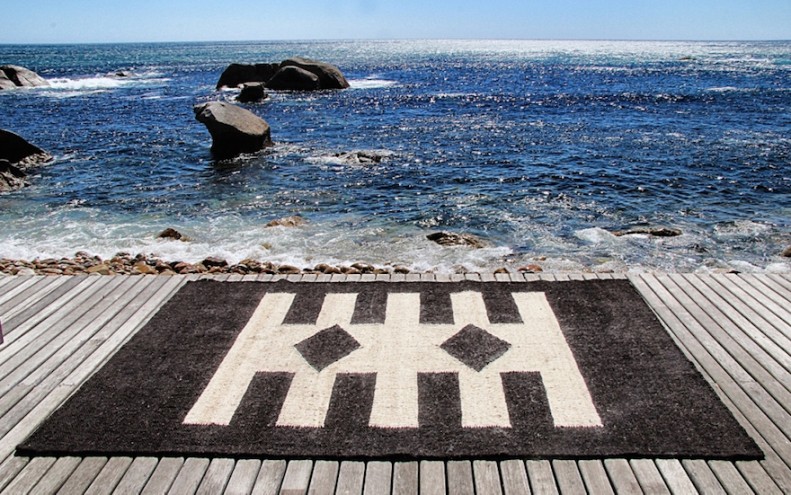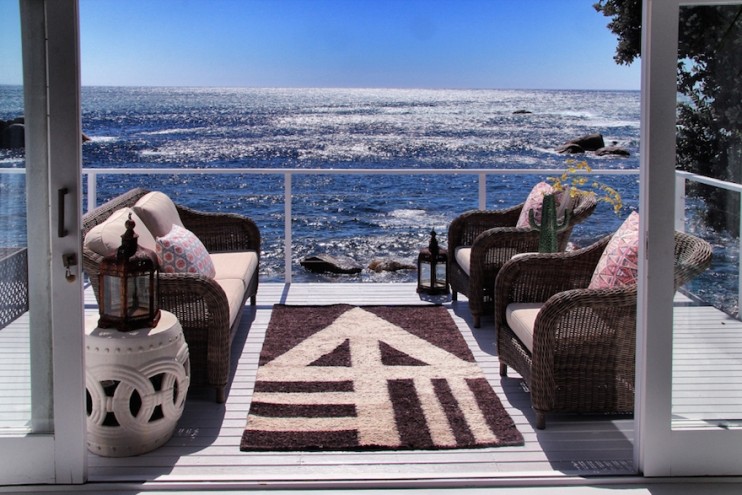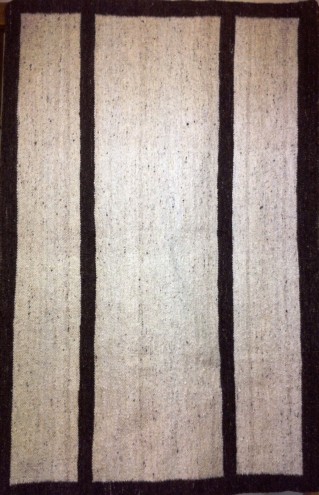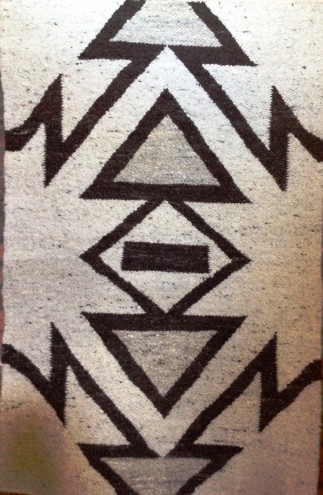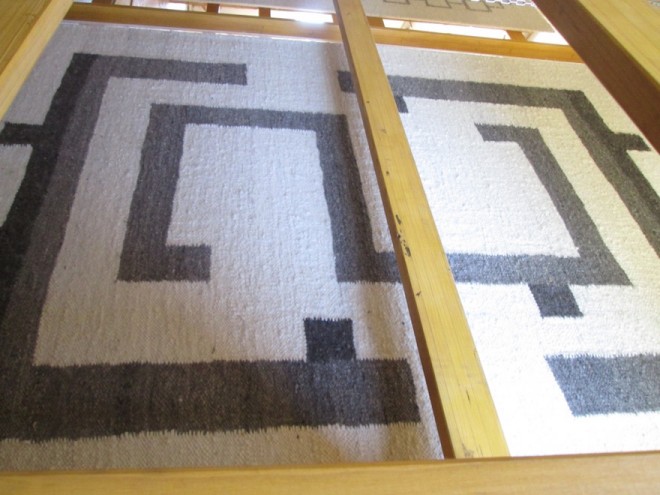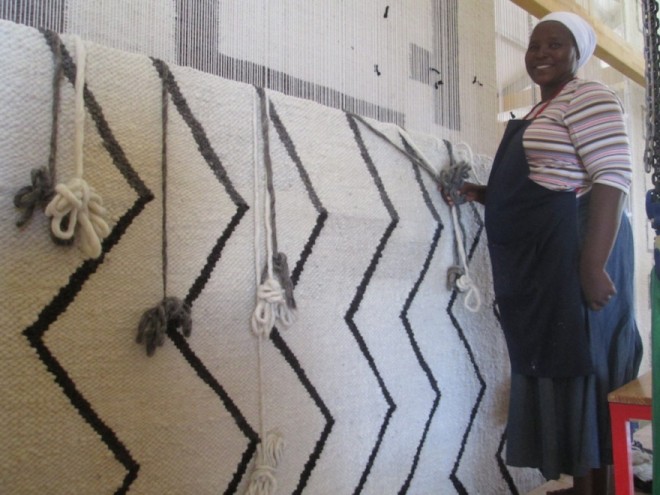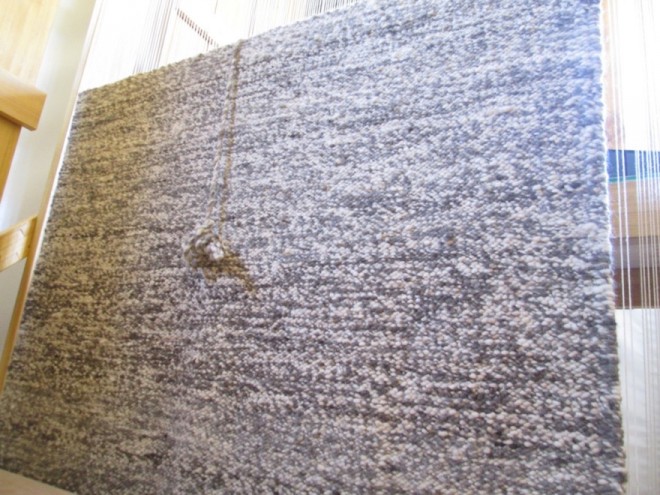From the Series
The look of the Kraal Gallery's Masana Collection is based on old heritage designs taken from patterns on traditional Ndebele hats from many years ago, infused with a little contemporary design.
The yarn is handspun in the Kraal factory from the fleece of Karakul sheep, the oldest domesticated breed of sheep. The tones of the wool range from a dark charcoal to light greys and off-whites. It is hand-spun to create yarn of an uneven thickness. “There is nothing uniform,” says founder and owner Alexander Daniel.
The wool is washed and dried to set the yarn and then the weaving process can begin. Each square metre of rug is made up of 3.5kg of wool. The weight is an indication of how thick and heavy each rug is – of how luxurious they might feel under foot.
At this year’s Design Indaba Conference, Dutch designer Hella Jongerius drew attention to the need to move back to a more holistic approach to design: to make things slowly and with greater care.
“These days there is too much shit design,” Jongerius said.
Last year, a buyer from the United States requested Masana rugs in a larger size. In order to make a rug measuring four metres by six metres in a single weave, with no joints or seams, Daniel decided to build a new loom – the biggest in South Africa – that would be able to hold a large carpet.
The largest looms measure five metres across and six metres wide, with a couple of two-ton chain lifting devices to allow the weaver to move up and down the loom. The loom took the better part of last year to build and still stands in a temporarily erected tent (used because the factory wasn’t big enough to house the large apparatus). The rugs that come off the loom are 24 square metres.
“Everything is natural,” says Daniel. “A lot of the designs are created from natural inspiration. The design work gets adapted on the loom. So even after it has been drawn up on paper and on canvas, the creative process still continues during the weave."
We use no electricity. Eskom can go to the dogs and we’d still be able to weave.
“Last month we split the wool and spun two different colours together into a singular yarn. It gave this wonderful marble effect,” he says.
Even one of the smaller rugs can take up to four or five weeks to weave.
As far as possible, the Kraal Gallery allows a single weaver to finish a single rug so that at the end the weaver can say the piece was 100 percent in her hands.
The weavers who work the looms are local women who are trained at the factory and given skills workshops (alongside the artisanal training) to help them understand how to manage their wages wisely, and to begin to save. Over the last 10 years, more than 300 new weavers have been trained.
“We have a developmental ideology,” says Daniel. “We try to have a wide impact. That’s why we won the Social Enterprise award at the Western Cape Premier’s Entrepreneurship Recognition Awards in 2013.”
Daniel’s father established the original weaving business in 1973. A German national, he walked from Germany to South Africa over the course of two and a half years and when he arrived, he noticed an abundance of natural resources and a need for jobs. After he and his wife successfully made their own rug, he started a factory in Bushbuck Ridge and within a year there were 400 new local weavers working with them.
The factory is now based in Sir Lowry’s Pass, with over 50 permanent master weavers.
“The tent that houses the new large loom is visible from the N2. If you come to the factory you can see everything being made. You can see the ladies climbing up and down the loom, sometimes singing – depending on what the weather’s doing.”
The Kraal Gallery’s more colourful pieces are woven from upcycled t-shirt cotton, which also means no messy dying has to be done in-house. The artisans are encouraged to be creative as they weave, resulting in expressive, tapestry-like pieces.
The Kraal Gallery showcased the Masana Collection at the Design Indaba Expo 2015.

